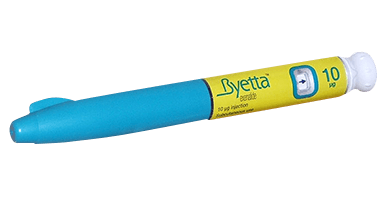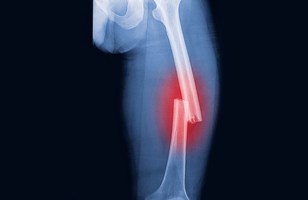Gila Monster Overview
Image 1 (Source)¹
The Gila Monster is a large, venomous, desert-dwelling lizard that, in the United States, is generally found in the arid regions of Arizona, Utah, New Mexico, southern California, and southern Nevada¹. These rocky-terrain-dwelling lizards have a diet primarily consisting of smaller birds as well as eggs of various organisms¹. Unlike other venomous creatures that utilize hollow fangs, the gila monster employs capillary action with grooved teeth to bite venom into its prey. Due to this more primitive mechanism of delivery, the gila monster is known to latch on to prey and continue to chew, thus helping to force sufficient venom into the prey through said capillary action. To the general population, even seeing a gila monster is extremely rare, thus making human envenomations highly unlikely. The following video provides an interesting look at the gila monster skull, why human envenomations are so rare, and the process of milking the venom for research.
https://youtu.be/tajSlpFZRaY?t=137
Video 1 (Source)
As with most other venomous animals, gila monster venom contains a number of components. Important toxicologic components include serotonin, amine oxidase, phospholipase A, substances promoting the release of bradykinin, helodermin, hyaluronidase, and exendin 4. As will be discussed later, exendin 4 has been revolutionary and crucial to the creation of a drug class for type-2 diabetes treatment known as GLP-1 analogues.
Mechanisms of Toxicity

Image 2 (Source)
The mechanism of toxicity for each aforementioned venom component will be described individually below. As venoms are complex mixtures of many chemicals, exact effects are often unclear. Overall symptoms of gila monster envenomation will be discussed later.
Serotonin
Serotonin in venom exhibits numerous physiologic consequences, including potent vasodilation, increased platelet aggregation, and pain production through direct irritation of tissues. Serotonin predominantly produces these effects by direct agonism of the various serotonin receptors found throughout the body. Vasodilation is mediated via agonism of endothelial 5-HT receptors in the blood vessels by serotonin, causing an increased release of endothelial-derived relaxing factor leading to the release of nitric oxide, a potent vasodilator. Serotonin also promotes the release of prostaglandin I2, a known vasodilator. Other effects, such as that of pain production, still require further elucidation.
Amine Oxidase
Amine oxidases are thought to cause damage due to their enzymatic, oxidative functions. This oxidation of proteins may create reactive and toxic oxygen species, such as hydrogen peroxide, leading to direct cell toxicity and apoptosis²,³.
Phospholipase A
Phospholipase A serves to regulate fatty acid metabolism in the cell, cleaving fatty acid tails from glycerol molecules. Cleavage of these fatty acids releases arachidonic acid, leading to marked inflammation and tissue damage².
Bradykinin
Bradykinin is crucial in the inflammatory pathway, inducing the production of various prostaglandins that cause marked vasodilation, increased vascular permeability, swelling, and tissue irritation.
Helodermin
Helodermin, a non-enzymatic peptide, is thought to produce hypotension via the activation of certain potassium channels in the endothelium². However, the effects of helodermin are still not fully described.
Hyaluronidase
This ubiquitous venom component is well-known for its effects in breaking down hyaluronic acid derivatives, increasing membrane permeability and allowing for greater venom penetration into tissues².
Exendin 4
Exendin 4 is a notable gilatoxin due to its similarities to endogenous human GLP-1. Via a glucose-dependent process, GLP-1 increases insulin secretion and suppresses glucagon secretion, leading to lowered blood sugars. However, as this process is glucose-dependent, hypoglycemia is not commonly associated with GLP-1. This peptide also exerts effects on appetite as well as gastric emptying. GLP-1 produces a direct suppression of POMC neurons in the appetite control center of the brain, leading to suppression of appetite. GLP-1 also antagonizes gut motility, delaying gastric emptying and promoting satiety for a longer period of time (see reference 4 for more detail). Overall, this fraction of venom may be heavily implicated in the nausea and vomiting produced by envenomation². Below is a figure from the American Diabetes Association depicting the various actions of GLP-1.

Image 3 (Source)
Toxicokinetics
As discussed above, the predominant route of exposure to gila monster venom is envenomation via bite wounds. This route bypasses other common toxin exposure sites, including the lungs and GI tract. As such, discussion of absorption is less applicable. The various components of gila monster venom are metabolized and excreted via different means. Serotonin is primarily removed from the plasma via reuptake into cells. While either outside the cell or after reuptake, serotonin is degraded by monoamine oxidase (MAO), an enzyme that cleaves the left amino chain. This metabolite, known as 5-HIAA is excreted via the urine once it has undergone phase-2 glucaronidation or sulfation (see reference 5 for more detail). Bradykinin may be metabolized by a number of enzymes, namely angiotensin-converting enzyme (ACE), to inactive metabolites. One such metabolite, kallirenin, is excreted via the urine. Little pharmacokinetic data is available on other components of gila monster venom, including helodermin, hyaluronidase, amine oxidase, and phospholipase A. Exendin-4, the GLP-1 analogue, is better studied, with an estimated half-life of 18-41 minutes for IV administration in rat models (see reference 6). This is slightly longer than the half-life of endogenous GLP-1, which has a half life of about 2 minutes, primarily via degradation by endogenous DPP-4. While little data is available on Exendin-4, the GLP-1 agonist most similar in structure to it, Exenatide (Byetta), undergoes minimal enzymatic metabolism. Exenatide is instead excreted predominantly in the urine (source 7). Overall, the toxicokinetics of various components of gila monster venom require further study and elucidation.
Genetic Variations
No information on the effects of genetic variations on gila monster toxicology could be found.
Carcinogenicity
No information on the carcinogenic effects of gila monster venom could be found.
Biomarkers
Unfortunately, there are currently no reliable biomarkers to assess a patient’s exposure to gila monster venom. Currently, diagnosis is made via oral patient history. As mentioned before, gila monster envenomation of humans is extremely rare.
Symptoms of Toxicity

Image 4 (Source)
The first symptom of gila monster envenomation is localized pain and swelling due to the various tissue-damaging toxins of the venom (bradykinin, serotonin, etc.). Other symptoms then appear, including nausea, vomiting, weakness, sweating, and hypotension². If untreated, the bite wound may also become infected, resulting in skin and soft tissue infections or more serious complications such as bacteremia.
Managing of Poisoned Patients
Currently, no antivenom is available to treat gila monster envenomation. Treatment is primarily supportive, including fluid resuscitation, pressors (dopamine, midodrine, etc.), pain management, wound cleaning, and infection prophylaxis/treatment².
Historical Relevance

Image 5 (Source)
As mentioned before, the most historically-relevant link to gila monster venom comes in the GLP-1 drug class for treatment of type-2 diabetes mellitus as well as obesity. The first drug in this class based on Exendin-4 isolated from the gila monster, Byetta (shown above), was approved by the FDA in 2005. since then, numerous other GLP-1 analogues have come to market, including Ozempic, Victoza, Bydureon, and even Rybelsus, an orally-active form of semaglutide (Ozempic). While the half-life of endogenous GLP-1 is only a few minutes, these drugs have various modifications to decrease metabolism and slow release into the blood stream. This has allowed administration to change from twice daily with Byetta to once weekly for Ozempic. These medications have revolutionized type-2 diabetes care, where an impaired GLP-1 response to meals has been noted. Due to their lack of association with hypoglycemia, positive effects on satiety and weight loss, and infrequency of administration, these GLP-1 analogues are now the first injectable medication of choice indicated by ADA guidelines for type-2 diabetics. For more information on this drug class, please visit the ADA’s Standards of Medical Care in Diabetes – 2020 (source 7).
References
- Gila monster. Smithsonian’s National Zoo. https://nationalzoo.si.edu/animals/gila-monster. Published June 29, 2018. Accessed July 28, 2021.
- Watkins JB, III. Toxic Effects of Plants and Animals. In: Klaassen CD. eds. Casarett and Doull’s Toxicology: The Basic Science of Poisons, Eighth Edition. McGraw Hill; Accessed July 27, 2021. https://accesspharmacy-mhmedical-com.proxy.lib.ohio-state.edu/content.aspx?bookid=958§ionid=53483751
- Bhattacharjee P., Mitra J., Bhattacharyya D. (2017) L-Amino Acid Oxidase from Venoms. In: Gopalakrishnakone P., Cruz L., Luo S. (eds) Toxins and Drug Discovery. Toxinology. Springer, Dordrecht. https://doi.org/10.1007/978-94-007-6452-1_11
- https://spectrum.diabetesjournals.org/content/30/3/202
- S. Athar, Serotonin and Tryptophan, Editor(s): Katie Kompoliti, Leo Verhagen, Metman, Encyclopedia of Movement Disorders, Academic Press, 2010, Pages 104-108, ISBN 9780123741059, https://doi.org/10.1016/B978-0-12-374105-9.00001-0.
- Parkes, D., Jodka, C., Smith, P., Nayak, S., Rinehart, L., Gingerich, R., Chen, K. and Young, A. (2001), Pharmacokinetic actions of exendin-4 in the rat: Comparison with glucagon-like peptide-1. Drug Dev. Res., 53: 260-267. https://doi.org/10.1002/ddr.1195
- American Diabetes Association (ADA). Standards of medical care in diabetes–2020. Diabetes Care. 2020;43(suppl 1):S1-S212. https://care.diabetesjournals.org/content/43/Supplement_1. Accessed January 22, 2020.















